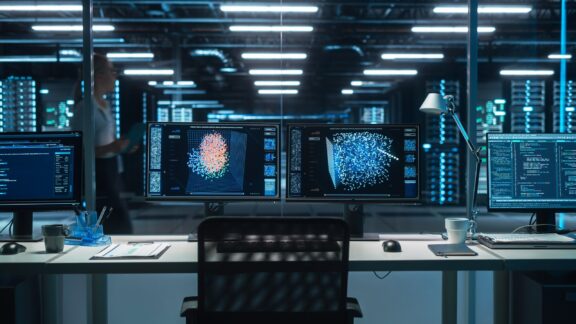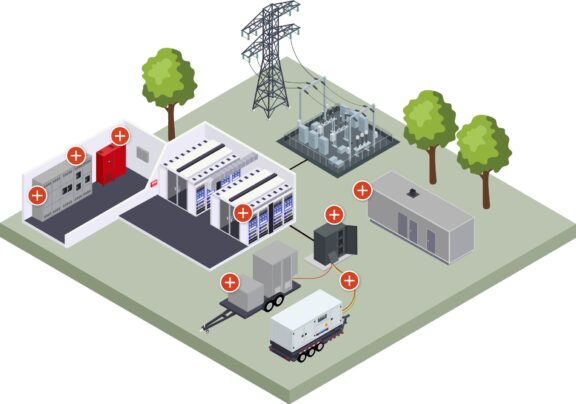Last Updated on April 12, 2023
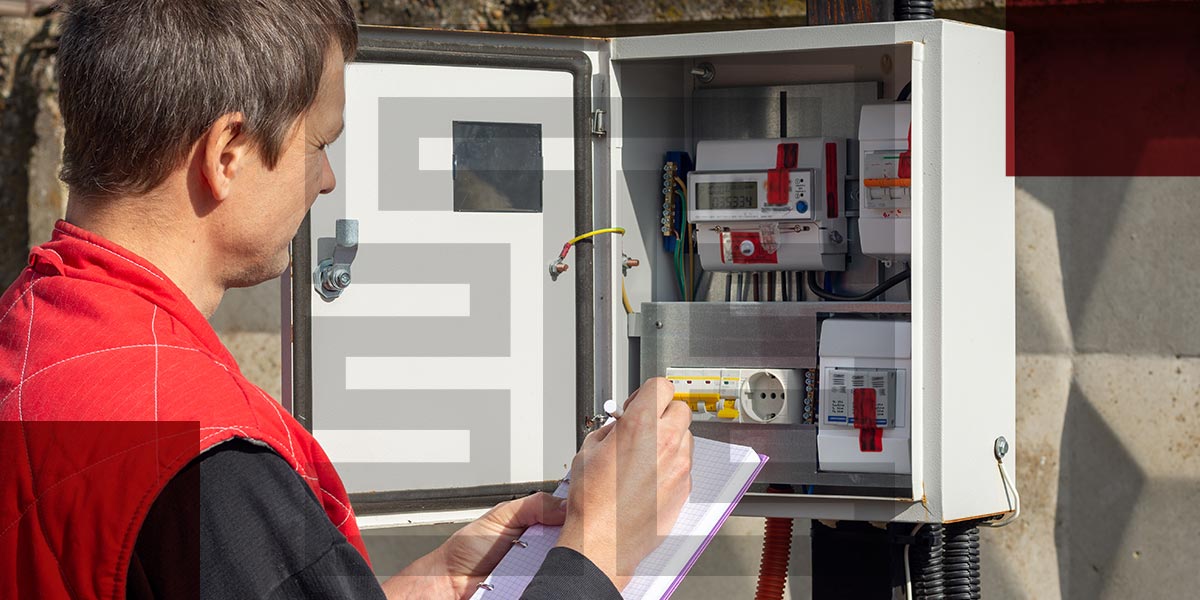
Power losses can be devastating events in hospitals, so these facilities must have means for emergency backup power.
Hospitals need a consistent flow of electricity for all their facilities and equipment to run. An emergency power supply becomes essential for ensuring little to no interruption of hospital operations during a power cut or a hospital power outage.
Specific requirements apply regarding hospital backup power. We’ll look at how hospitals run without power, the specific backup power requirements and the best products to ensure your facility always has power.
HOW HOSPITALS RUN WITHOUT POWER
Generators are diesel-powered backup power supplies that generate electricity for short or prolonged periods depending on requirements and capacity. They are the most common means of backup power for many industries due to their powering abilities and reliability. Facilities like large hospitals with multiple floors, wings and wards may need a few generators in place.
Generators need a way to transfer their energy into your facilities. The most common means for hospitals to use generators are:
TRANSFER SWITCHES
Transfer switches are designed to safely transfer power from one source — your generator — to another — your facility. They do this automatically or manually. When there’s a power outage, the transfer switch stops using the primary interrupted power source and switches to the secondary or alternative source, which is your generator. Switches ensure the correct direction of energy flow from the energy source to the energy load.
Transfer switches can be used for three primary purposes:
- Transferring energy between a generator and an energy load
- Transferring energy between energy loads or utilities
- Transferring energy between generators
PARALLELING SWITCHGEAR
Paralleling switchgear integrates and combines the power from two or more energy sources for higher power output. It controls the power distribution through:
- Metering: It monitors the amount of energy using individual meters to manage energy loads accurately.
- Protection: It protects the generator, energy load and other components by supporting the need for backup power. In other words, it safely trips the power for specific components to ensure their safety during power interruptions.
- Controlling: It manages the power distribution for the different systems.
Paralleling switchgear is ideal for large hospital facilities needing multiple generators to power the whole building.
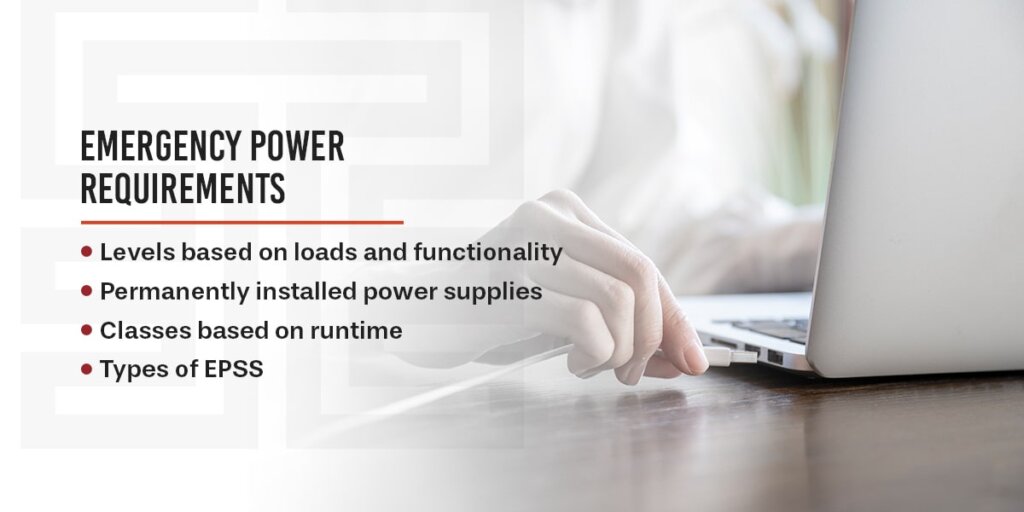
EMERGENCY POWER REQUIREMENTS
There are specific emergency power requirements for hospitals to comply with, provided by the National Fire Protection Association standards 110 or NFPA 110. The NFPA regulates the installation, use, upkeep, performance and overall maintenance of emergency power systems. Because hospitals deal with human life, there are specific regulations they must comply with. Here are some of the NFPA 110 rules that affect your facility:
- Levels based on loads and functionality: According to the NFPA, there are two levels for classifying all hospital equipment. Level 1 applications are those that directly impact human life. This equipment can result in death or severe injury due to power interruptions. Level 2 applications have no immediate or critical impact on human life. These applications are still vital but will not result in the loss of human life due to power failure.
- Permanently installed power supplies: Hospital equipment like life support machines, respiratory equipment, public safety communication equipment and other vital applications to human life follow strict regulations. Due to the extent of damage a power cut can cause for both levels, the NFPA requires that facilities operating applications in these levels must have permanently installed emergency power supplies.
- Classes based on runtime: The NFPA classes the output capability of emergency power supply systems (EPSS) based on how long they run at peak capacity without needing to be refueled. Class 2 power supplies can run for two hours, Class 6 power supplies run for six hours and so on.
- Types of EPSS: The last classification and requirement for emergency power sources categorize EPSS under type. The type classification ranks the hospital’s backup power response time. In other words, it classifies backup power supplies according to how long the system takes to kick in after a power failure. For all Level 1 backup power, the standard is 10 seconds.
PRODUCTS USED FOR HOSPITAL BACKUP POWER
Hospitals must ensure their essential services, equipment and applications have constant access to power due to these elements being classified as Level 1 applications. A hospital power outage can cause irreparable damage. Therefore, hospital emergency power system regulations must be met. Here are some of the standard hospital backup power products used:
DOCKING STATIONS
Generator docking stations allow you to safely and legally meet hospital emergency power requirements. They allow you to safely connect your facility’s power system to a generator without needing an electrician or intense cabling. Generator docking stations are already wired to enable instant use. These stations comply with NFPA 110 and NEC hospital backup power requirements.
TRANSFORMERS
Transformers convert voltages to either high or low voltages. If your generators produce a higher voltage than what your facility runs on, a transformer would then convert the incoming generator voltage to a lower one that matches your hospital’s requirements. Step-up transformers convert low voltage to a higher one. Step-down transformers adjust the voltage based on the current’s fluctuations.
You can choose from these transformer types:
- Dolly-style transformers allow you to manage the range and needs of your emergency power sources to follow operational requirements and regulations.
- Cage-style transformers give you access to stable, dependable power capabilities for varied power outputs for the needs of the required medical equipment.
CABLES
Your medical facility needs to use reliable cables to power Level 1 and 2 equipment during a hospital power outage. Hospital equipment has various cabling requirements, including:
- Durable 4/0 power cables are great for keeping critical operations powered, including in overflow scenarios where tents may be required.
- The 2/5 banded cables or stage and lighting cables ensure your medical staff has access to powered equipment wherever they need to provide medical care.
- The 6/4 construction box cables are solid, robust and tough cables that will allow your staff to work in severe conditions and climates.
PANELS
Panels are used to manage power distribution during demanding situations. When hospitals need to set up temporary facilities, they have to ensure the right amount of power is distributed to the correct facility. These critical supplies include:
- Mobile construction boxes allow your medical teams to take power to remote, isolated locations with make-shift requirements.
- Portable mini power distribution panels are compact enough for your medical personnel to travel with and have access to sufficient power management.
- Power distribution panels streamline your power distribution management, allowing you to keep crucial equipment on during an outage. These panels make automating your energy distribution system safe and efficient.
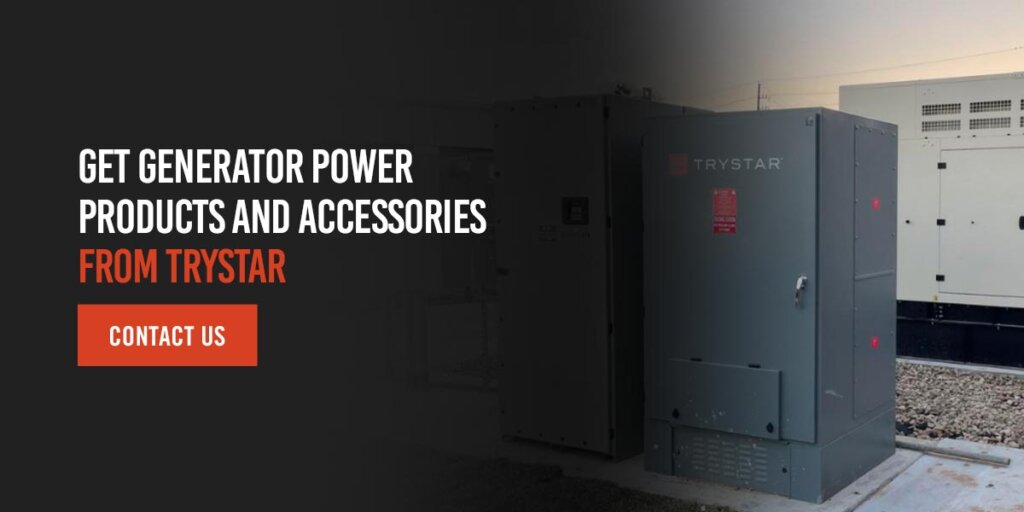
GET GENERATOR POWER PRODUCTS AND ACCESSORIES FROM TRYSTAR
Ensuring your medical facilities have reliable, stable, durable and compliant emergency power sources and connections is vital for your operation. Your facilities need to meet the minimum hospital emergency power requirements.
At Trystar, we provide safe and trusted backup solutions for your generators to match your specific requirements. You can keep saving lives while the power is out — we’ll help you stay powered during blackouts while you meet all your patient needs. Let us know your backup power requirements to get your quote.
We Are Here
To Help
Our team is here to support you and solve your power challenges. Connect with our responsive experts today to learn about our customized power solutions and products.
